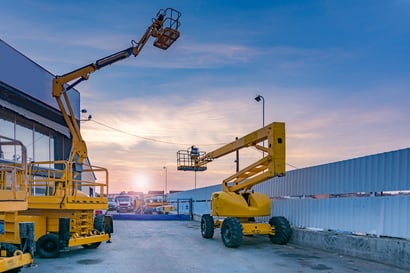The Price of Safety

As of today, the leading cause of fatalities and injury in the construction industry is due to a falling related incident. Data that was gathered by the United States Department of Labor and published by the Occupational Health and Safety Administration (OSHA) found that in 2017, falling incidents alone contributed to 39.2% of the total construction tragedies(1). But how do these incidents happen?
Much of the conventionally used construction equipment is designed to safely extend a worker as far as possible in order to allow them to operate in difficult to reach places that current automated processes are not capable of doing. These working platforms are called Mobile Elevated Work Platforms (MEWPs). Although effective by design for accomplishing work, these machines, when used improperly, can become dangerous. Below are a few examples of commonly used equipment where risk of injury is much higher.
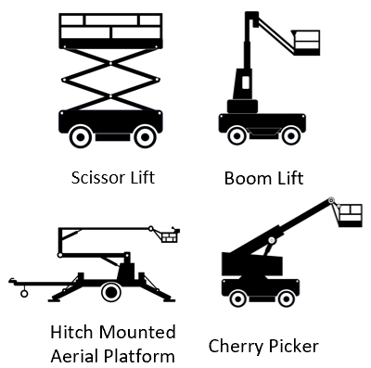
The main cause of injuries while using these machines, is the high probability of the machine toppling over if the center of mass shifts too quickly or far in one direction, injuring personnel or damaging valuable job site materials and progress. This same risk also affects construction vehicles like dump trucks, cranes, excavators and bulldozers when moving heavy loads. The danger when using both MEWPs and construction vehicles creates a strong demand for a device that can inexpensively measure changes in angles to determine a bodies center of mass accurately and mitigate work place injuries.
The goal of every construction site should be to create a work environment that protect workers from unsafe working conditions. With today's technology, there are many safety features that can easily be implemented into an existing working system to decrease accidents. Technologies like the Inertial Labs Kernel Tilt Sensor create an affordable solution for safety in the workplace.
Applications of Tilt Sensors
Regardless of how the job site uses workplace vehicles, all are pre-rated for specific weight limits. Continuous usage or improper loading of vehicles creates a need for a device that has the ability to measure if the vehicle is being overloaded. By placing a Kernel DTS on major structural components, the device can easily be integrated into a system that alerts the user if the structural integrity of the vehicle is at risk, even if it is operating within the pre-rated weight limit requirements. This adds a second layer of safety and a peace of mind to both workers, and management. The image below gives an example of how two Kernel DTSs could use relative orientation angles to detect a yielding structural component on an excavator. If the difference in angles exceeds a set limit, the user could be alerted of the danger.
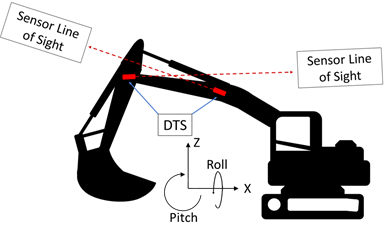
When using MEWPs also known as Aerial Work Platforms (AWPs) or Elevating Work Platforms (EWPs), external factors outside of weight limits can cause swaying while a worker is in the air. Excessive movement while on the platform, high-winds, or uneven terrain can prove fatal when using such vehicles. Using a Kernel DTS to detect unsafe swaying of the platform would drastically decrease the number of injuries occurred in a construction site from falling. A device could even be used as a part of a system that could automatically retract an MEWP if operating conditions were monitored as being outside of safe operating conditions.
Benefits of the Digital Tilt Sensor
The Inertial Labs Kernel Digital Tilt Sensor (DTS), has many benefits when integrated into a system. Due to its compact size, the device is easily mountable on or inside a carrier of choice. What separates the Inertial Labs Kernel DTS from other tilt sensors is its performance in a dynamic environment. Many tilt sensors on the market have satisfactory performance in a static setting, but as soon as the carrier object begins to move in the horizontal frame, the device no longer can measure accurately pitch and roll. This is because accelerometers can only measure relative to earth’s gravitational pull. A dynamic platform rotating or translating at a constant velocity could never capture motion by accelerometers alone. Integrating the acceleration value to get orientation while moving would provide an error too large to be usable. This is why the Kernel DTS uses gyroscopes to calculate orientation, which is then corrected by the accelerometers to mitigate drift. The graphic below shows how by doing this you can get more accurate angular rates and relative orientations.
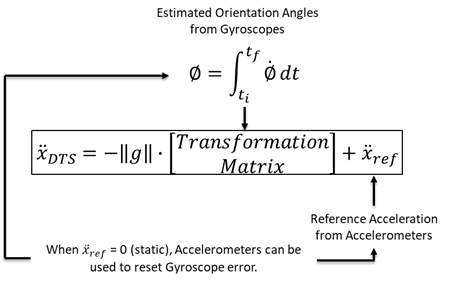
The Inertial Labs Kernel DTS is designed specifically to be used in an environment that may be exposed to high shock and vibration, which makes it perfect for using on the construction site. For rugged environments, two models give users the option to choose from an IP65 rated device, or an IP67 rated device. After an in-house calibration, the device is shipped pre-configured to measure Pitch, Roll, Acceleration (in all 3-axes) and Angular Rates with impressive accuracy. There is always a perfect solution for every application, and we can promise that we will help you find it.
What Do You Think?
Here at Inertial Labs, we care about our customers satisfaction and want to continuously be able to provide solutions that are specifically tailored to problems that are occurring today, while vigorously developing products to tackle problems of tomorrow. Your opinion is always important to us whether you are a student, an entrepreneur or an industry heavyweight. Share with us your thoughts of our products, what you would like them to be able to achieve, or just say hello at opinions@inertiallabs.com
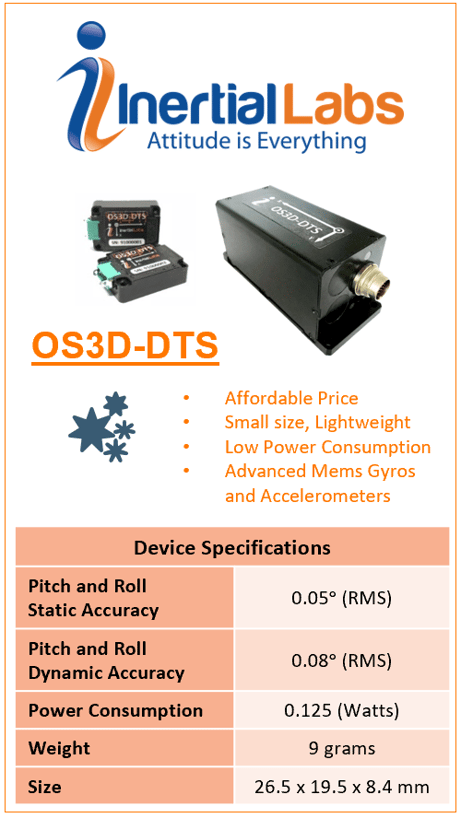
(1)“UNITED STATES DEPARTMENT OF LABOR.” Occupational Safety and Health Administration, https://www.osha.gov/oshstats/commonstats.html.
Trademark Legal Notice: All product names, logos, and brands are property of their respective owners. All company, product and service names used in this document are for identification purposes only. Use of names, logos, pictures and brands does not imply endorsement. Mentioned or referenced industries are trademarks of its affiliates or its respective owners, registered in many jurisdictions worldwide.

